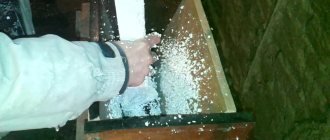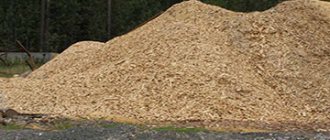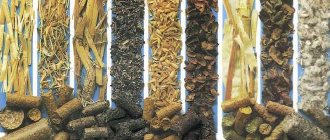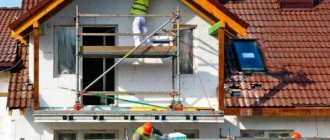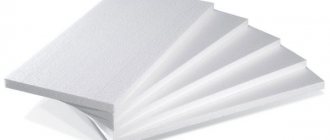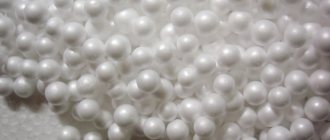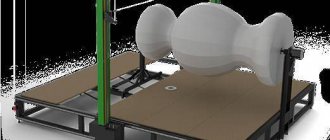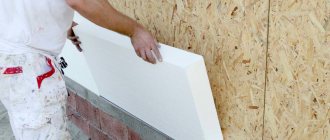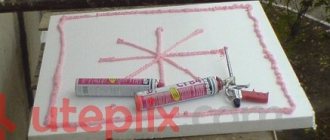All stages of foam production technology are considered. The equipment needed to produce this material is listed. Recommendations are given that you should definitely read before purchasing.
Many of us have come across expanded polystyrene more than once, tried it to the touch, made something from it, used it in construction, for home improvement. However, not everyone knows what the foam manufacturing technology is and what its features are.
Oddly enough, there is nothing super complicated in the production of this material. And it is noteworthy that now quite a lot of low-quality polystyrene foam has appeared on the market, which is made without taking into account the relevant norms and regulations.
Some craftsmen manage to create a small production line even in an ordinary garage. Yes, don't be surprised.
And this must be taken into account when purchasing - not all Vasya Pupkins strictly adhere to the prescribed technological standards. And what standards can there be in a garage?
How polystyrene foam is made
Earlier we told you what polystyrene foam is. We remember that this material consists of numerous cells filled with air. This means that the manufacturing process must include foaming the material.
That’s right: the foaming process is one of the most important in the production of expanded polystyrene .
However, that's not all.
Stages of foam manufacturing technology
Typically the process includes:
1. Foaming. During this process, the raw materials are placed in a special container (foaming agent), where, under pressure (a steam generator is used), the granules increase approximately 20-50 times. The operation is completed within 5 minutes. When the granules reach the required size, the operator turns off the steam generator and unloads the foam material from the container.
2. Drying the resulting granules. At this stage, the main goal is to remove excess moisture remaining on the granules. This is done using hot air - it is directed from bottom to top. At the same time, for better drying, the granules are shaken. This process also does not last long - about 5 minutes.
3. Stabilization (tracking). The granules are placed in bunkers, where the aging process takes place. The duration of the process is 4.12 hours (depending on the ambient temperature and the size of the granules).
Important note: the polystyrene foam manufacturing technology may exclude the 2nd stage (drying). In this case, stabilization (tracking) will last longer - up to 24 hours.
4. Baking. This stage of foam production is often called molding. The idea is to connect the previously obtained granules together. To do this, they are placed in a special mold, after which the granules are sintered under pressure and under the influence of high temperature water vapor. Lasts approximately 10 minutes.
5. Maturation (aging). The goal is to rid the resulting polystyrene foam sheets of excess moisture, as well as remaining internal stresses. To do this, the sheets are placed in a free space in the production workshop for several days. In some cases, ripening can take up to 30 days.
6. Cutting. The manufactured foam blocks are placed on a special machine, on which the blocks are cut into sheets of appropriate thickness, length, width. This manufacturing process is performed using nichrome strings heated to a specific temperature. Accordingly, both horizontal and vertical cutting of blocks is carried out.
This is how foam is made.
Of course, after the listed 6 stages, the 7th stage can be performed - processing the remaining scraps . As a result, they are mixed with other granules, which will then undergo the same processes - sintering, curing.
The equipment that is used in the production of polystyrene foam is shown in table form:
The need for sun protection
Expanded polystyrene should not be used if its surface may be exposed to direct sunlight. What is the reason for this? The material can be destroyed under the influence of ultraviolet and x-ray radiation, as well as significant temperature. If you use expanded polystyrene as an external insulating layer for walls, then it will definitely need to be protected with plaster, which is applied to a special reinforcing mesh. This, of course, increases the cost of the work. Regular paint can be applied over the insulating material. This technology will not provide an interesting solution for the facade, but it will be a profitable and effective approach to carrying out insulation and repair work.
This material cannot be used when constructing a well-type insulation system. It is permissible to attach any type of insulation after the vapor barrier layer. This indicates that first you will need to fix the vapor barrier and only then proceed to attaching the insulation layer.
Foam manufacturing technology directly affects quality
As we said above, the market is now filled with a considerable amount of low-quality material. It can be produced in garages or some warehouses.
But the main problem is not where the material is made (although the environment also affects quality), the main problem is not following all the rules for making polystyrene foam.
What deviations may there be from the correct production of expanded polystyrene?
The most varied - from poor-quality granulation to poor, inaccurate cutting of foam blocks into sheets.
Some smart guys don’t carry out stabilization or aging at all. For them, the speed of production of polystyrene foam is exclusively important.
“The more, the better—we’ll earn more money!”
Because of this, the characteristics of the foam are greatly deteriorated:
- it may turn out to be fragile, fragile,
- granules may be poorly connected to each other,
- density may be uneven.
This can also occur due to low-quality, faulty equipment that was used in production - foamers, dryers, compressors, steam generators, etc.
And another important point : with poor manufacturing technology, foam plastic can have a sharp, unpleasant odor. The following picture is possible: they brought brand new sheets of expanded polystyrene home, put them in a garage or other room, and. Soon they heard that the room was filled with some kind of pungent, unpleasant smell.
Technological advantages
The described material combines strength and lack of fragility; in addition, it is lightweight, which provides advantages during its installation. Expanded polystyrene is quite easy to process; to do this, it will be enough to use a handsaw or a regular knife. With the working surface of such tools you can easily saw it.
Quite often, when carrying out construction work, the weight of the material is taken into account, since it can place additional load on the foundation of the building. Lightweight polystyrene foam boards do not have this disadvantage. This not only simplifies the work, but also does not involve strengthening and strengthening the base if the work is carried out in the facade area. During construction, you will not need to think about building a powerful foundation. If the slabs are used in tandem with a layer of plaster, they will slightly increase the outer perimeter of the building, which indicates that there will be no need to expand the roofing system. After all, it is very labor-intensive and costly.
Conclusions on the production of polystyrene foam
- The technology is quite simple, but requires mandatory compliance with all prescribed norms and rules.
- Material (which will look like high-quality material) can be obtained even with significant deviations from the production rules. And “handicraft” companies (bad people) take advantage of this.
Therefore: buy only products from reliable, trusted manufacturers (who monitor quality) . Check that sellers have the appropriate quality certificates.
Now you know how polystyrene foam is made, you know the main features of manufacturing technology and which material should be preferred. Good luck!
Polystyrene foam is used very widely - it is indispensable as a thermal insulation, finishing and packaging material. What is he? How is polystyrene foam produced, what raw materials and equipment are used? Let's find out!
What is polystyrene foam?
Foam plastics include all types of gas-filled plastics.
Distinctive features of the material:
- porous structure, which consists of closed cells;
- low density level;
- high sound and heat insulation properties.
The group of foam plastics includes:
- polyvinyl chloride material;
- polyurethane analogue;
- urea-formaldehyde foam;
- phenol-formaldehyde material;
- polystyrene analogue.
Expanded polystyrene is the most common material. I will describe its production. Expanded polystyrene was created in 1951 by the German company BASF. Then it received the brand name “styropor”.
Foam plastic for its main purpose is a thermal insulation material. It is 98% air. The gas is contained in many small, thin-walled polystyrene foam cells.
What raw materials are used?
Expandable polystyrene is used as a raw material for polystyrene foam.:
- It is produced by suspension polymerization of styrene.
- The process occurs when a pore-forming substance is added, which is a mixture of isopentane and pentane. The volume of the mixture in the material is 5-6%.
- If the foam is intended for construction, then 1% fire retardant is added to the raw material mass. These are usually bromine compounds.
Polystyrene is produced in the form of granules. These spherical particles are treated with antistatic agents. They prevent the material from accumulating electrical charges during transportation. Processing also improves the processability of raw materials. Polystyrene granules in Russian are designated PSV (foaming polystyrene).
Brands, types of foam and raw materials vary from manufacturer to manufacturer. Therefore, before purchasing a material, read its symbol in the technical documentation.
- EPS (expandable polystyrene) , expanded polystyrene. This is the international designation for granules. FS (self-extinguishing polystyrene) is another possible marking.
- PSB (suspension polystyrene foam without press) is the Russian designation for polystyrene foam.
PSB-S (suspension polystyrene foam, pressless, self-extinguishing) is another version of the Russian marking.
After this designation there is a digital indication of the material grade by density.
Where is foam plastic used?
The use of polystyrene foam was determined by its technical characteristics. Both molded products made from foamed polystyrene and its crushed waste are used.
Foam boards are used in construction:
- For do-it-yourself insulation of facades and interiors of buildings.
- For the production of permanent formwork.
- In sandwich panels.
- As an insulating layer inside load-bearing structures (three-layer reinforced concrete panels or blocks, layered masonry).
- As an insulating base under a screed for mastic or roll roofs.
- For thermal insulation of ceilings and basements.
- As protection against freezing of the road base.
Foam plastic is also used:
- in shipbuilding;
- in refrigeration devices;
- when arranging pontoons and floating piers;
- as packaging for food products and household appliances.
Due to its low price and easy processing, decorative molded foam products are now widely used:
- skirting boards;
- ceiling tiles;
- moldings, etc.
Scope of application
Expanded polystyrene is used as an element for insulating various objects. This could be, for example, water pipes.
It is used to work with:
- window and door slopes;
- roofing;
- floor;
- walls.
High-density polystyrene foam is required where high demands are placed on the quality of structures. The use for pipe insulation is economically justified. They take block polystyrene foam so that in case of damage the pipe can be easily accessed. To do this, remove a certain area of the protective coating.
Expanded polystyrene is actively used for pipe insulation
Expanded polystyrene is actively used in the construction of transport routes. It is used because it reduces the vertical load on the road surface during the construction of structures. It is also used in the production of SIP panels. We can say that its scope of use is almost unlimited. It has a low density and is therefore not sufficiently resistant to mechanical damage. This must be taken into account when choosing it as a material for work.
Production of foam plastic boards
The foam production technology includes the following steps:
- Initial foaming of raw materials;
- Aging of granules;
- Their final foaming;
- Sintering polystyrene foam into slabs.
Saturated steam is used as a coolant in the production of polystyrene foam.
Pre-foaming of granules
Pre-foaming of raw materials is the most important stage in the production of expanded polystyrene. It affects the quality of the final product:
- Loading granules into the pre-foamer . Before this, their required volume is determined.
- Supply of water steam . It is supplied under pressure of 4-6 bar.
- Foaming granules . At the same time, they increase many times in volume.
- Stopping steam supply . This occurs when the granules reach a volume of one cubic meter.
- Pre-foamer unloading . Delivery of foamed granules by pneumatic transport to the dryer and then to the holding hopper.
The production of foam plastic grades of different densities is influenced by:
- brand of raw materials, since polystyrene granules have different fractionations;
- volume of loaded granules;
- steam characteristics;
- the total volume of already foamed granules.
The density of the material is also affected by the time it remains in the pre-expander:
- If the time period is too long , the granules begin to crack. Therefore the density increases.
- If the foaming period is short , then the foam will have a significant variation in its density. Therefore, you will have to reduce the temperature by supplying a small volume of air and reduce the power supply to the pre-foamer.
To produce lightweight grades of expanded polystyrene (8-12 kg/m³), repeated foaming is used. The granules loaded for the second time must be well saturated with air.
The storage time for raw materials before re-foaming should be 11-24 hours. The smaller the granule size, the shorter their ripening should be.
Drying and conditioning of foamed raw materials in a ripening bunker
- The foamed raw materials are dried in dryers. To do this, heated air is supplied to them through a perforated panel. Its temperature is +30-35 °C. The granules are then cooled.
- The pre-foamed raw material is subjected to a slight vacuum. Therefore, the granules are sensitive to changes in the environment. To relieve internal stress from them, they are blown out by a fan into a storage hopper. There the raw materials are stabilized.
- Based on the brand of raw materials used, its conditioning time can range from 11 to 24 hours.
- The ambient temperature when keeping the granules should be +16-20 °C. If it is lower, then the duration of conditioning should be increased. In summer, at temperatures above +20 °C, the holding period should be reduced.
When foam granules are delivered to bins, their apparent density increases due to their collisions with the inner walls of the conveyor. When determining foaming parameters, this increase in density must be taken into account.
At the stage of aging the granules, due to the fact that the pressure inside the spheres is less than atmospheric, air enters them. Pentane and water are squeezed out of the raw material until it stabilizes.
DIY polystyrene pre-expander
Pre-foaming agent - intended for the primary foaming of expandable polystyrene granules using heat treatment. Saturated water vapor is used as a coolant.
All pre-expanders are divided into 2 types:
- continuous action
- periodic action
The pre-foaming agent we produce (hereinafter referred to as PF) is of PERIODIC ACTION.
This choice is justified by a number of advantages that a periodic pre-foam has over a continuous action pre-foam:
Disadvantages of continuous pre-expanders:
1) During the foaming process, the density of the granules is adjusted in three ways, usually in the following order:
- steam supply adjustment
- feed speed adjustment
- adjusting the height of the overflow chute, if equipped
All three methods include adjusting the residence time of the granules in the chamber
2) Steam pressure can only be reduced (by mixing with air), but not increased, because
the process occurs at atmospheric pressure (continuous pre-expanders are an open, completely leaky container).
This disadvantage, in addition to the possible violation of the foaming technology itself, entails another, no less important. Namely, uneconomical steam consumption, and as a result, an increase in the cost of steam generation.
3) The average residence time of raw materials in a continuous pre-expander is about 3 minutes, while the minimum achieved density of foamed granules is directly related to the pentane content in the raw materials.
Advantages of a batch prefoamer:
1) The pressure in the pre-foamer is adjustable, therefore the required steam temperature for the foaming process can be selected in accordance with the required density or the level of pentane content in the raw material. !!! Inadequate steam temperature can lead to cell destruction
| Good external cell structure | Disturbed external cell structure |
The lower the pentane content in the raw material, the later foaming begins and the higher the required temperature.
2) Periodic pre-foamer - a sealed container, which entails a much more economical consumption of steam, and also allows you to increase the foaming speed compared to continuous action.
With periodic foaming, the density of the granules is adjusted as follows:
- adjusting the steam processing time of granules;
- adjusting the amount of raw materials at each load;
- adjusting the height to which the foam granules rise in the working chamber;
- steam pressure adjustment;
- adjusting the amount of steam.
Thus, batch blowers have a more flexible operating principle, and lower densities can be obtained even for relatively small granules. The volume change occurs quickly and with minimal losses.
Basic models of foamers
| PV-1 Pre-foamer with a capacity of 10 cubic meters. m per hour provides a workshop productivity of 70-90 cubic meters. m of polystyrene foam per shift (8 hours), depending on the skills of the operating personnel. Loading of raw materials is manual through a socket in the upper part of the container. Unloading granules through a door with manual or pneumatic drives at the customer's choice. |
| PV-1A (automatic) High-performance pre-foamer, providing workshop productivity of up to 200 cubic meters per shift. Operates in fully automatic and manual mode with remote control. The supply of raw materials is carried out through an additional loading hopper with a flexible screw. Dosing is by weight. The foamed granules are unloaded into a drying unit, from where they are sent to granule holding hoppers. Transportation of foamed granules is carried out by pneumatic transport with a Venturi pipe, which eliminates deformation of the foamed granules. |
| PV-3 Compact and economical batch foamer with a capacity of 0.75 cubic meters. m per hour. It is used in industries where expanded polystyrene is not the main raw material: casting using gasified models (GMP), production of polystyrene concrete, production of frameless furniture, soft toys, partially filled with expanded polystyrene foam granules; production of tourist and sports equipment, etc. Manual loading through the socket, unloading through the door. It is possible to manufacture with manual drive at the customer's choice. |
Technical characteristics of pre-expanders (given for the production of PSV-S grade 25)
| Parameter name | Meaning | ||
| Maud. PV-1 manual | Maud. PV-1A automatic | Maud. PV-3 | |
| Nominal capacity per cycle, m3 | 1,0 | 1,0 | 0,05 |
| Installation capacity, m3/hour, not less | 10 | 15 | 0,75 |
| Useful volume (capacity) of the container, m3 | 1,2 | 1,2 | 0,08 |
| Bottom and agitator material | stainless steel | ||
| Brand of the resulting foam by density | M15, M25, M35, M50 | ||
| Volumetric mass of the resulting foam crumb, kg/m3 | 11…40 | ||
| Operating (excess) steam pressure, MPa, no more | 0,01…0,03 | ||
| Activator rotation speed, rpm | 90 | ||
| Operating steam temperature, °C | 100…108 | ||
| Overall dimensions (container diameter), mm | 1100x1050x2800 | 3410x1050x4370 | 1030x820x1400 |
| Weight, kg | 530 | 750 | 180 |
| Standard of service, pers. | 1 | ||
| Characteristics of electrical equipment | |||
| Type of supply current | alternating three-phase | ||
| Rated current frequency, Hz | 50 | ||
| Rated voltage of the power circuit, V | 380 | ||
| Number of electric motors on the installation, pcs. | 1 | 3 | 1 |
| Rated drive power, kW | 4 | 22 | 2 |
Technology and equipment for the production of polystyrene foam
The production of expanded polystyrene and plaster on insulated facades is a profitable business with an average entry threshold. Expanded polystyrene is widely used in a variety of fields - in construction, in the food industry, in the automotive industry.
How to choose equipment for the production of polystyrene foam?
If you decide to make polystyrene foam yourself, you need to choose the appropriate equipment for the workshop. Select components of production equipment based on your planned volume of production.
For example, if the required amount of material is no more than 1000 cubic meters per month, you need a line with a capacity of 40 cubic meters per shift. She will be able to provide this volume of foam.
Please note that the calculated line performance may not match the actual one. It depends on the following points:
- The most important factor is the origin of the raw materials: whether they are imported or domestic. With Russian pellets, productivity may decrease slightly.
- The second nuance is the brand of polystyrene foam that you will produce. Thus, polystyrene foam PSB-12 has a density of less than 12 kg per cubic meter. Therefore, it can only be obtained by double foaming. This reduces line productivity.
It is better to choose equipment for the production of foam plastic that has high productivity. You should not operate a low-power line to the limit of its capabilities; it may soon fail.
How to choose a steam generator?
The source of steam is a steam generator (steam boiler). Its minimum productivity should be 1200 kg per shift. However, it is advisable to purchase a steam boiler of greater power. This will make it possible to further increase the productivity of the equipment.
Finalization of products
Technological diagram for the production of expanded polystyrene sheets.
At the end of the secondary foaming process and after the foam has cooled, a vacuum is created in the granule cells. The foam resists pressure differences until air fills the cells. The product is cooled to a temperature of 40-45°C directly in the molds and only then removed. Moisture drawn by vacuum into the granules increases the weight of the product and its thermal conductivity. Therefore, it is recommended to dry the products.
If it is necessary to obtain a product with a density of more than 10 kg/m³, one stage of polystyrene foaming is sufficient. The pressure of water and isopentane vapor will be sufficient for the material to fill the entire volume of the mold. The material will compact and stick together.
The technology for the production of expanded polystyrene provides for heat treatment of suspension polystyrene in 2 stages or double foaming. At different enterprises, production is organized differently, due to differences in equipment. The difference in the choice of equipment is explained by the configuration of the manufactured products and their density. Often, foam plastic is made directly inside building structures.
The main advantages of polystyrene foam are: ease of attachment to various surfaces, ease of mechanical processing, gluing with other building materials, and the ability to process with a knife or handsaw. It can also be easily molded into various complex shapes. One of the main characteristics of polystyrene foam is the low cost of the material.
Conclusion
Polystyrene foam can be produced from granules of various sizes and origins. There are different brands on the market in terms of density and thickness, so take this into account when purchasing material.
When choosing equipment for the production of polystyrene foam boards, consider its type, productivity, completeness and level of automation. This directly affects the volume and quality of the material produced.
The video in this article will help you better understand the topic. If something remains unclear to you, ask questions in the comments.
- Foaming polystyrene foam . The raw materials are placed in a special container, where the material is treated with steam of low-boiling liquids. As a result of foaming, the granules increase in volume from 20 to 50 times. After reaching the required level of granules, the steam flow stops and the working material is removed from the tank. The process itself takes about 4 minutes.
- Vyezhka . After drying, the material is sent to a special aging bunker, according to the brand (15, 25, 35 and 50) where the aging process takes place. The entire procedure takes from 4 to 12 hours, depending on the size of the granules and the temperature of the environment.
- Curing blocks . The prepared blocks are sorted by grade and stored. At first, the blocks may still release the remaining moisture. The ripening period of blocks takes from 12 to 30 days.
- Cutting foam blocks. On a special foam plastic machine, string cutting of foam blocks into slabs of specified sizes is carried out. Standard sizes are 20, 30, 40, 50 and 100 mm; other sizes can be determined by individual order.
